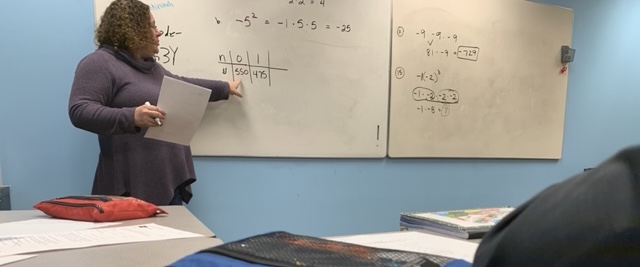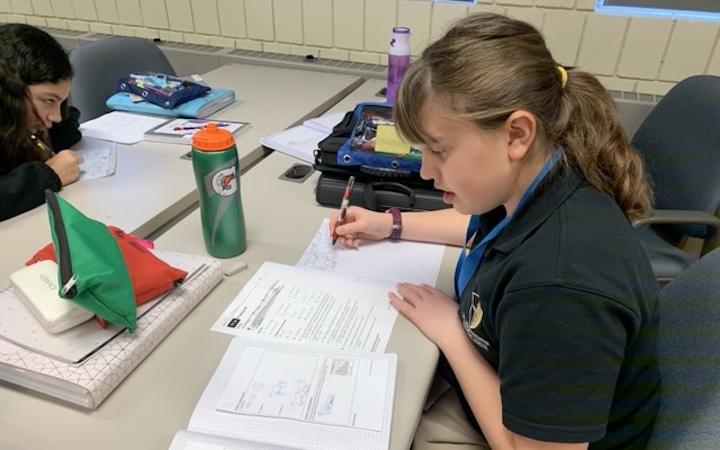I distinctly remember the first time I walked into Rebecca Buller's middle school math classroom at Saint Alphonsus Catholic School in Brooklyn Center, Minnesota.
The energy was electric and students were buzzing with excitement while talking about...MATH!
Rebecca uses the station rotation model. She divides her students into three groups — a technology station, a collaborative work station where students apply math learning, and her small-group instruction station. She combines this model with her version of the flipped classroom model to make math concepts attainable for all students.
 Rebecca's flipped classroom model starts at home. Instead of using paper and pencil to answer math problems for homework, Rebecca's students watch a short video and answer questions embedded in the video.
Rebecca's flipped classroom model starts at home. Instead of using paper and pencil to answer math problems for homework, Rebecca's students watch a short video and answer questions embedded in the video.
She created these short videos to introduce math concepts students apply the following day. Students come to class and rate themselves based on their understanding of the video. Rebecca uses the students' ratings to create daily instructional groups.
I could write a series of posts on tips and innovations I learned from Rebecca, but for the sake of time and maintaining our small-group instruction theme, I asked Rebecca three questions regarding her small-group instruction techniques.

How do you use small-group instruction in your middle school classroom?
I begin my small group with questions (if there are any from their video). I use this time to work through problems from their homework. The discussions and the problems will be different from group to group. For example, I start with my students who need the most support on the concept we are working on that day. As my groups move through the period, the discussion and the problems get a little more challenging.
How do you group your students?
I use multiple ways to group my students. I take data from the NWEA MAP test on the standard that we will be working on and group the students based on what they are ready to learn. I also take their previous test/quiz scores and use that information. (This way I know how engaged they have been on the topic we are studying). Finally, I use personal experience — if the student is struggling, and having a hard time completing the homework on a regular basis, I would move them to a group where they will be successful. On the flip side, if a student is excelling quickly and needs more challenge, I would also move them to a different group. It is important to be flexible and willing to move students around as needed.
Do you have any fun tips, ideas, or activities that you have tried or found to work well with your small-group instruction?
I have quite a few things from Teachers Pay Teachers that I like - "I Can" games, Bump games, Killing Zombies. Since Wednesdays are Mass days, I usually incorporate games and activities because of the shortened class period. We don't have as much time to spend in our stations so I use Wednesdays for enrichment and more collaborative activities.
Our team is so grateful for the dedication and creativity Rebecca exemplifies every day. Her unique blended classroom model allows her students to receive instruction at their "just right" level, which yields significant growth.
Do you have any ideas or activities that have worked well in your math classroom? Do you have any questions for Rebecca? Let us know by posting below!
 Alliance for Catholic Education
Alliance for Catholic Education
